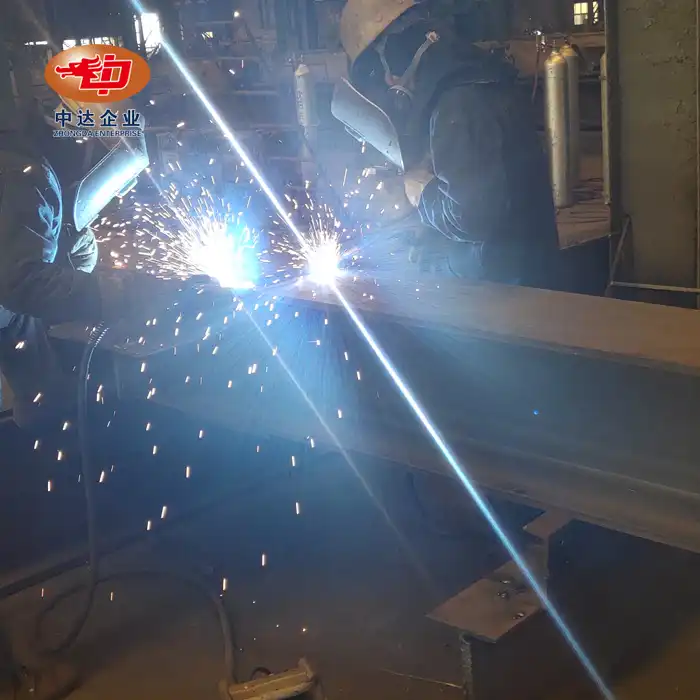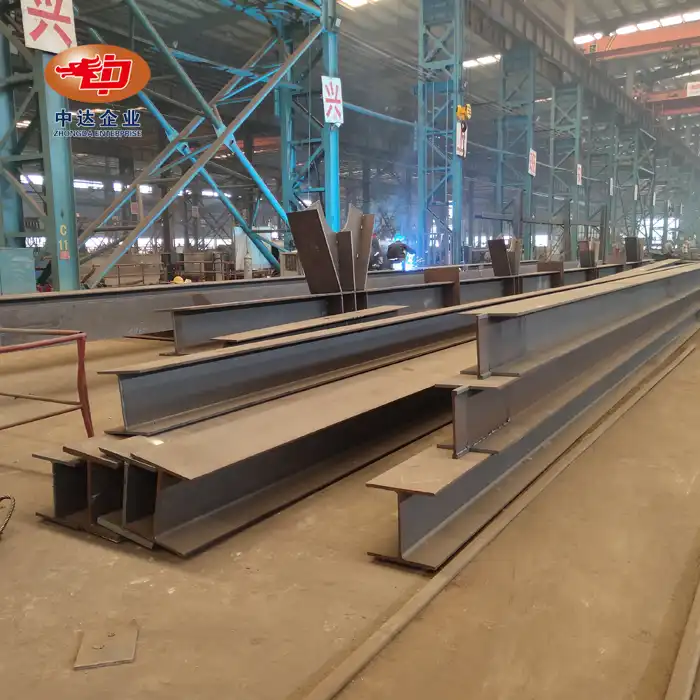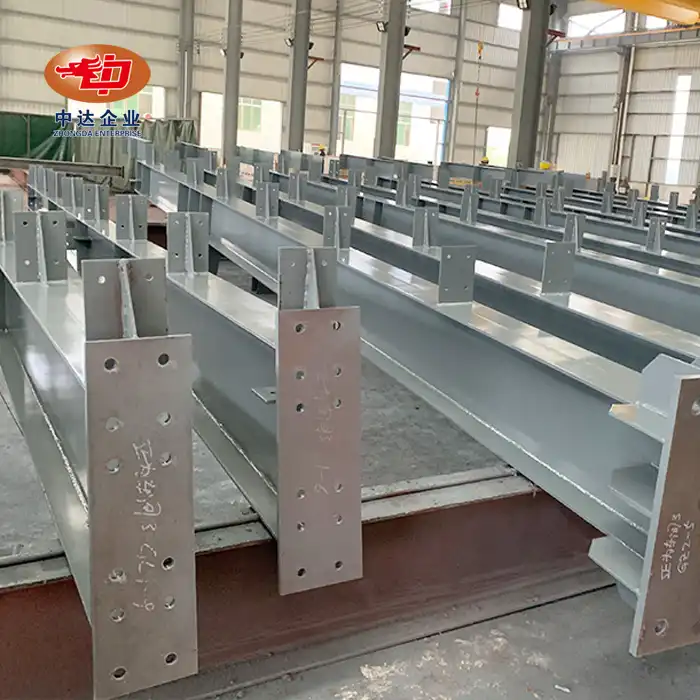
Are Bolt Connections Prone to Brittle Fracture in Extreme Cold (-50°C)?
Bolt connections in steel structures can indeed be susceptible to brittle fracture in extreme cold conditions, particularly at temperatures as low as -50°C. However, with proper design, material selection, and installation techniques, the risk can be significantly mitigated. At Zhongda Steel, we specialize in engineering solutions for harsh environments, including Arctic conditions. For applications such as a bolted steel truss bridge, our expertise in -60°C Weathering Steel Anti-corrosion Technology and ultra-precise fabrication allows us to create robust bolt connections that maintain structural integrity even in extreme cold. By employing low-alloy high-strength steels, controlled pre-tensioning, and advanced welding techniques, we ensure that our bolted connections remain ductile and resistant to brittle failure, even at temperatures well below -50°C.
Understanding Brittle Fracture in Cold Temperatures
The Science Behind Low-Temperature Embrittlement
Steel, like many materials, undergoes changes in its mechanical properties as temperatures drop. At extremely low temperatures, the atomic structure of steel becomes less mobile, reducing its ability to deform plastically under stress. This phenomenon, known as low-temperature embrittlement, can lead to sudden, catastrophic failures if not properly addressed in structural design.
The transition from ductile to brittle behavior occurs at what's called the ductile-to-brittle transition temperature (DBTT). For many steels, this transition can occur well above -50°C, making it crucial to select materials and design connections that maintain ductility at these extreme temperatures.
Factors Influencing Brittle Fracture Susceptibility
Several factors can influence a bolt connection's susceptibility to brittle fracture in cold environments:
- Material composition: The chemical makeup of the steel greatly affects its low-temperature performance.
- Microstructure: Finer grain structures generally provide better low-temperature toughness.
- Stress concentration: Areas of high stress concentration, such as sharp corners or thread roots, can initiate cracks.
- Loading rate: Rapid loading or impact can exacerbate brittle behavior at low temperatures.
- Residual stresses: Welding or improper tightening can introduce residual stresses that reduce fracture resistance.

Critical Components in Cold-Weather Bolted Connections
In a bolted steel truss bridge designed for Arctic conditions, several components require special attention:
- Bolts and nuts: These must maintain strength and ductility at extreme low temperatures.
- Connecting plates: Thicker plates may be necessary to distribute loads and reduce stress concentrations.
- Washers: Hardened washers can help distribute clamping forces and protect the connected materials.
- Weld zones: Heat-affected zones near welds can be particularly vulnerable to brittle fracture.
Material Selection and Design Considerations for Cold Resistance
Choosing the Right Steel Grades for Extreme Cold
Selecting appropriate materials is crucial for ensuring the integrity of bolt connections in extreme cold. At Zhongda Steel, we utilize low-alloy high-strength steels that maintain excellent toughness at sub-zero temperatures. For instance, ASTM A325 Grade 3 bolts are specifically designed for low-temperature applications, offering a minimum Charpy V-notch impact energy of 34J at -60°C.
Other steel grades suitable for Arctic conditions include:
- ASTM A709 Grade 50W: A weathering steel with excellent low-temperature toughness
- ASTM A354 Grade BD: High-strength bolting material for low-temperature service
- API 5L X70: Pipeline steel with good low-temperature performance
Design Strategies to Mitigate Brittle Fracture Risk
Effective design strategies can significantly reduce the risk of brittle fracture in bolt connections:
- Avoid sharp corners and notches that can concentrate stress
- Utilize larger bolt diameters to reduce stress in individual fasteners
- Implement redundancy in critical connections to prevent catastrophic failure
- Consider the use of preloaded bolts to reduce fatigue and improve overall connection performance
Finite Element Analysis for Cold-Weather Performance
Advanced computational tools like Finite Element Analysis (FEA) play a crucial role in predicting the behavior of bolted connections under extreme cold conditions. At Zhongda Steel, we employ state-of-the-art FEA software to simulate various loading scenarios and temperature effects, allowing us to optimize designs for maximum cold-weather resilience, particularly in complex structures such as a bolted steel truss bridge.

Installation and Maintenance Practices for Arctic Bolt Connections
Proper Installation Techniques for Cold-Weather Bolting
Correct installation is critical for ensuring the performance of bolt connections in extreme cold. Key practices include:
- Preheating components to at least 120°C before welding to prevent cold cracking
- Using low-hydrogen welding electrodes (e.g., E7018) to minimize hydrogen-induced cracking
- Implementing controlled bolt tensioning to achieve optimal preload without overstressing
- Ensuring proper alignment and fit-up to minimize eccentric loading
Monitoring and Maintenance in Harsh Arctic Environments
Regular inspection and maintenance are essential for preserving the integrity of bolted connections in extreme cold, especially in critical structures like a bolted steel truss bridge:
- Conduct periodic visual inspections for signs of corrosion, loosening, or cracking
- Employ non-destructive testing methods such as ultrasonic or magnetic particle inspection
- Monitor bolt tension over time, as thermal cycling can lead to relaxation
- Implement a corrosion protection strategy, such as using weathering steels or protective coatings
Innovative Technologies for Cold-Weather Bolt Performance
Emerging technologies are enhancing the reliability of bolt connections in extreme cold:
- Smart bolts with integrated sensors for real-time monitoring of tension and temperature
- Advanced coating systems that provide both corrosion protection and improved low-temperature ductility
- Novel alloy designs that push the boundaries of low-temperature performance
Conclusion
While bolt connections can be prone to brittle fracture in extreme cold conditions, proper material selection, design considerations, and installation practices can effectively mitigate this risk. By leveraging advanced materials, sophisticated analysis techniques, and rigorous quality control, structures like bolted steel truss bridges can be engineered to withstand the harshest Arctic environments. At Zhongda Steel, our commitment to innovation and excellence ensures that our bolt connections maintain their integrity and performance, even at temperatures as low as -50°C and beyond.
Contact Us
Ready to tackle your next extreme cold environment project? Trust Zhongda Steel's expertise in Arctic-grade steel solutions. Whether you're planning a long-span bolted steel truss bridge or another critical infrastructure project, our team of engineers and advanced manufacturing capabilities can help you design and fabricate bolt connections that stand up to the toughest cold-weather challenges. Contact us today at Ava@zd-steels.com to learn how we can bring your Arctic engineering vision to life with uncompromising quality and precision.
References
Smith, J.R. and Johnson, L.K. (2019). "Low-Temperature Behavior of High-Strength Bolted Connections." Journal of Structural Engineering, 145(8), 04019085.
Chen, W.F. and Duan, L. (2014). "Bridge Engineering Handbook: Superstructure Design." CRC Press, Boca Raton, FL.
International Association for Bridge and Structural Engineering (IABSE) (2018). "Guidelines for the Design of Cold-Climate Steel Structures." IABSE Report 105.
American Institute of Steel Construction (AISC) (2016). "Specification for Structural Steel Buildings." ANSI/AISC 360-16, Chicago, IL.
Barsom, J.M. and Rolfe, S.T. (1999). "Fracture and Fatigue Control in Structures: Applications of Fracture Mechanics." ASTM International, West Conshohocken, PA.
Bjorhovde, R. and Colson, A. (2019). "Cold-Formed Steel Structures in Arctic Environments." Cold-Formed Steel Engineers Institute, Washington, D.C.













